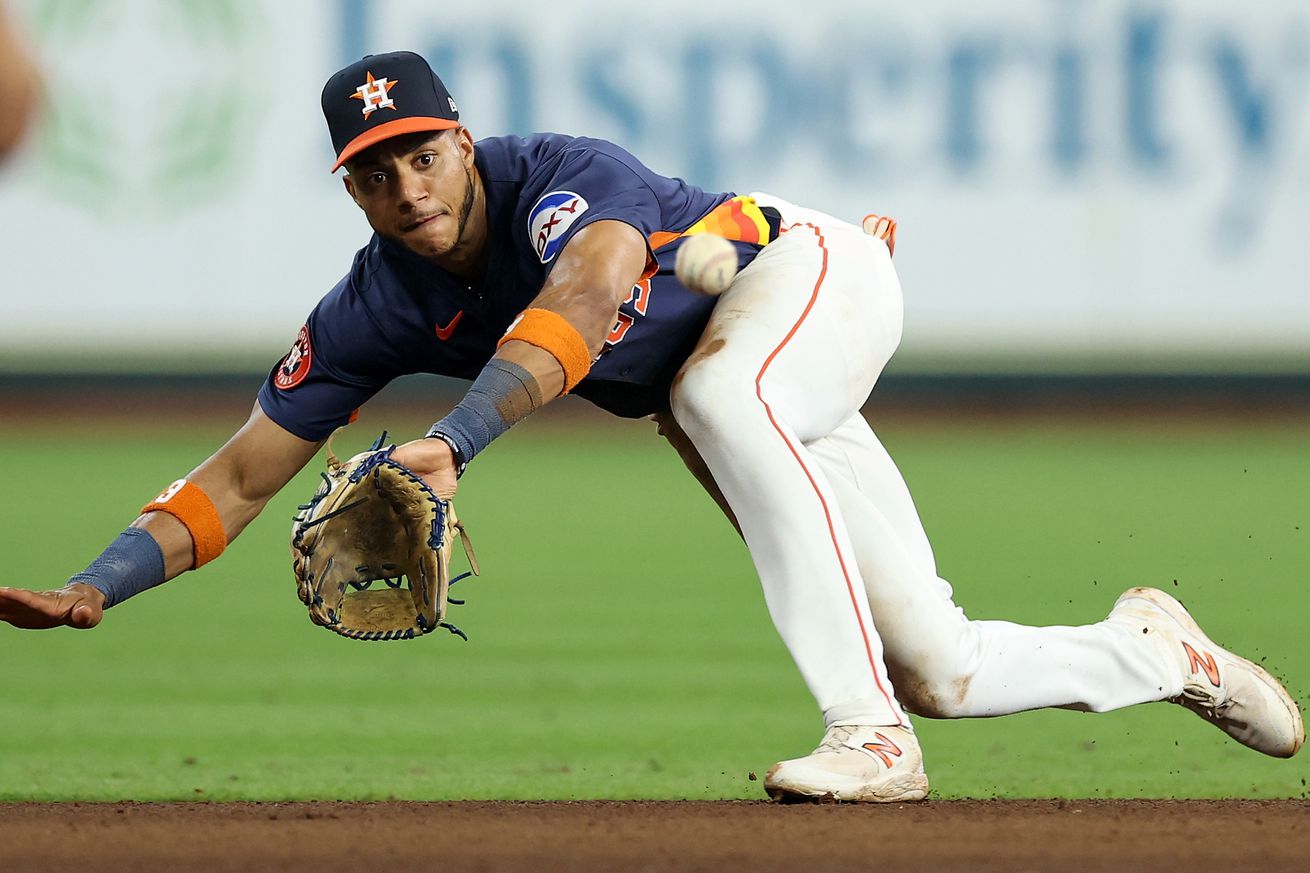
Astros may be reversing the diminished defensive metrics of 2024
Team defense is an important contributor to wins and losses. But defense seldom gets the credit it deserves because direct measures of runs allowed are usually assigned to the pitcher, either in the form of RA/9 or ERA. However, suppressing runs allowed should be viewed as a run prevention function, which is jointly produced by both the pitcher and fielders.
Since RA/9 is based on the combination of pitching and defense, analysts try to sort out the contributions of pitching and defense by using Fielding Independent Pitching (FIP) to valuate pitchers or deducting the estimated impact of fielding to derive a pitcher’s bWAR. In fact, the difference between a pitcher’s bWAR and fWAR is due to the treatment of defense.
To evaluate defense in isolation, indirect metrics are used to calculate runs saved. The two most important advanced metrics are Fielding Bible’s Defensive Runs Saved (DRS) and Statcast’s outs above average (OAA). Defensive metrics are particularly susceptible to small sample size distortions, so we must consider our conclusions at this early stage of 2025 as tentative.
During the infield shift era, the Astros were one of the top defensive teams, but the full infield shift was outlawed by rule after the 2022 season. Subsequently the Astros’ defensive ranking fell considerably in 2023 and 2024. For instance, the Astros DRS ranking fell from 4th in 2022 to 17th in 2023 and 19th in 2024. DRS indicates that the Astros “lost” 67 runs saved per year between 2022 and 2024, which is equivalent to about 7 fewer wins.
The Astros’ front office and coaches seemed determined to address the decline in defense. During the off-season the Astros made defensive upgrades to the infield defense, with three new players (Paredes, Gold Glover Walker and former Gold Glover Brendan Rodgers) along with a new defensive ccordinator, Tony Perezchica. The Astros also decided to move 2d baseman Jose Altuve to left field most of the time, which allowed former gold glovers Mauricio Dubon and Rodgers to share time at 2d base, joining former gold glover Jeremy Pena in the middle infield.
The expected improvement in the infield defense may have been at the expense of the outfield. Several outfielders are new to playing the outfield, namely Altuve and rookies Cam Smith and Zach Dezenzo. RF Kyle Tucker was traded away, and the loss of his good defensive skill would be noticed. However, the Astros also hoped that Jake Meyer’s top defensive ability in CF would mitigate the inexperience in LF and ‘RF.
With the small sample size caveat that the defensive metrics’ savings can change significantly in the future, let’s examine how the team defensive rankings look so far.
At this point in the season, the Astros’ fielding ranking reflect a discrepancy between DRS and OAA. This isn’t unusual; Statcast and DRS utilize different methods and this can lead to differing metrics for various players or positions.
Statcast gives very good ratings to the Astros defense so far. The Astros are No 1 in OAA and No. 1 in range (+9 and +7, respectively).
Fielding Bible ranks the Astros 12th in DRS with +3. Even though this ranking isn’t as high as Statcast’s rating, if the Astros stayed at this level throughout the year, it is an improvement over the 19th ranking in 2024.
So, the “new look” Astros’ fielding seems to be doing quite well so far this season. I don’t put much weight on errors as a measure of fielding. But on this “traditional” measure, the Astros are tied for 7th in fewest errors. (The Astros have committed seven errors; by comparison, the Red Sox are the worst team for errors with 19.)
Due to sample size, I’m not going to focus on particular players. But we can look at the positions which produce the discrepancy between DRS and OAA.
The first difference is LF, which is of obvious interest, given the Astros’ decision to move Altuve to LF. DRS views Altuve’s defense as poor so far, while OAA views Altuve as pretty much average. Statcast ranks the Astros’ LF defense at 13th and 14th in OAA and range with zero (average) for both metrics. DRS has the Astros’ LF defense ranked last with -7. So the differing measurements of Altuve in LF account for a large part of the overall difference in the Statcast and Fielding Bible rankings for the Astros.
Visually, most of Altuve’s hiccups in LF seemed to occur in the first couple of games, and he has appeared to settle in as LF since then. So, it’s very possible that rankings on both systems will improve with time. Personally, I tend to give more credence to Statcast’s OAA for outfielders, given the precise camera measurements used to evaluate range. Furthermore, DRS has known weaknesses in dealing with the Crawford Box wall. But in any event this is something to watch.
Statcast has not produced pitcher fielder numbers, which is another source of difference between OAA and DRS. DRS ranks the Astros’ pitcher defense as 26th at -2 runs saved. A significant part of this ranking is -1 runs saved on pitchers’ contribution to stolen bases.
Given the loss of Kyle Tucker, the defensive rankings in RF are also of interest. The rankings indicate that the combination of Smith, Dezenzo, Dubon,and McCormick in RF has produced good defense. DRS ranks the Astros’ RF defense as tied for 1st with +4 runs saved. The Statcast OAA ranks the RF defense at 7th with +1. Despite some initial uncertainty as to what the Astros would get out of their fielders in RF, so far, so good.
Again, it’s early to reach conclusions, but the team defensive metrics seem to be moving in the right direction.